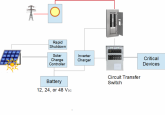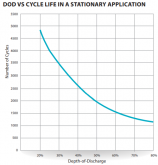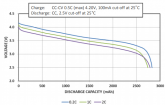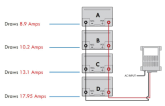svetz
Works in theory! Practice? That's something else
If you have a battery question and it's not a "beginner" question please try one of the battery boards.
Question that will be in covered in this thread
| Batteries play an important role in solar PV systems providing power while the sun is down or during peak demand hours with excess grid charges. During the day solar energy is converted by PV arrays and sent to a solar charge controller (sometimes the controller may be inside the inverter). This energy is used to recharge the battery, power devices within the home, and export to the grid. When sunlight or the grid isn't available or desirable to use, the inverter converts battery power to AC for the home. Video that compares battery technologies. |  |
Question that will be in covered in this thread
- How does a 100 AH battery compare to a 1kWh battery?
- How do I compare the value of two different battery chemistry?
- How efficient are batteries at storing and releasing Energy
- What's a C rate?
- How many amp Hours do I need?
- Designing a Battery Bank
- Wiring Batteries in Parallel
- Lithium Charging Parameters for four 3.2V cells in series (DIY 12V)
- Is it safe to discharge Lead Acid batteries to 20%?
- What can I use to separate my LFP Cells and/or line my metal box with to protect my cells ?
Last edited:











